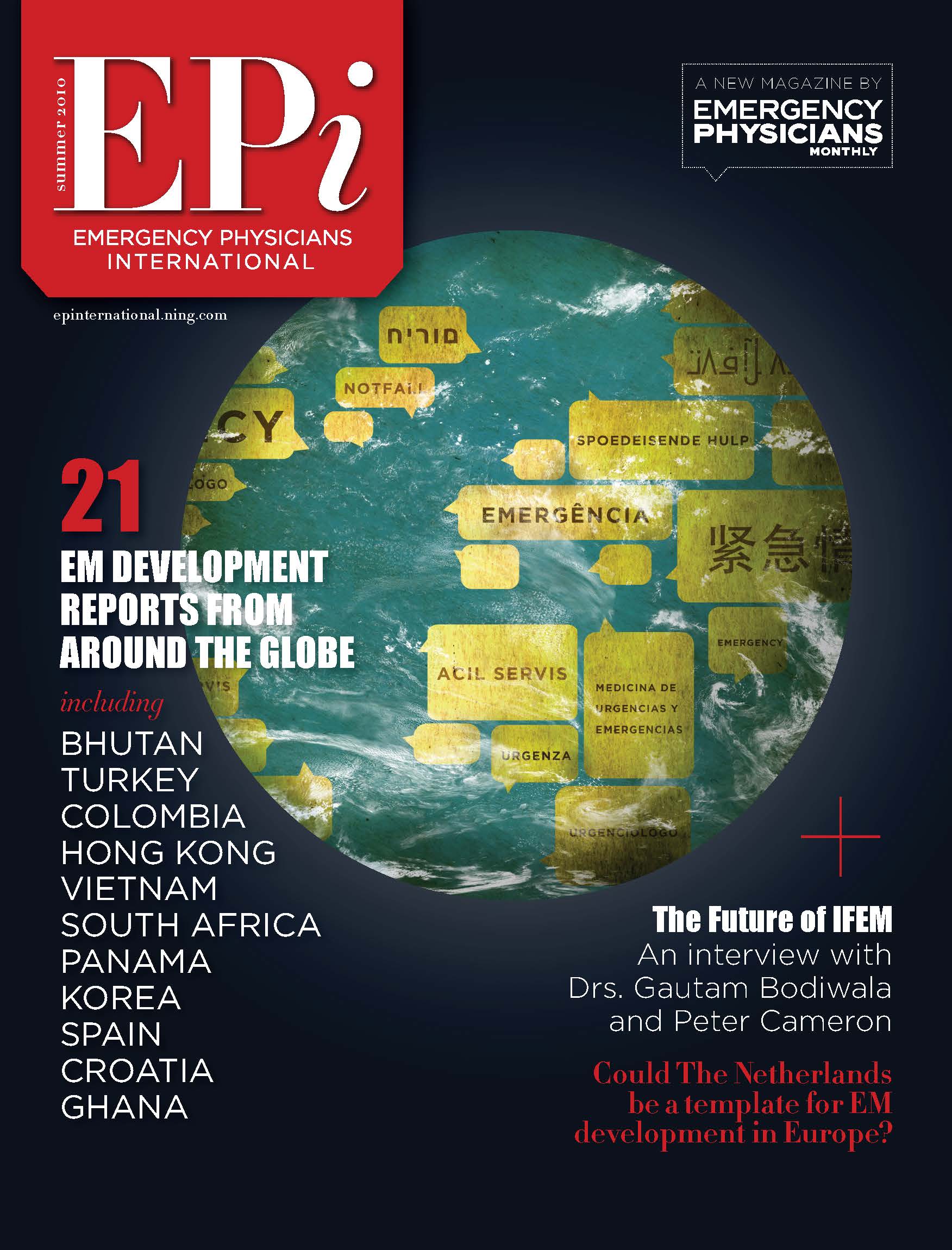COVID-19 in Colombia Part I: Experiencing the Pandemic
We cannot deny the dramatic change that this pandemic has brought us. It has changed the way we practice medicine, and even more the way an emergency service functions. The latter is especially true because emergency services are the first line of attention to tend to complicated respiratory patients affected by COVID-19. This sanitary outbreak forced us to change the way we manage the emergency room by changing our habits and behaviors, to improve the flow of patients in heavily congested emergency departments. Another unsuspected effect was the psychological stress due to the risk of contagion, which was not found outside of tactical medicine settings. This is an interesting insight indeed since our country (Colombia) suffered for several years from violence and drug cartels, but those experiences prepared us to react in a swift and assertive manner against threats by training our physicians in that type of medicine. It also made us aware of a lack of fulfillment in the application of isolation protocols. Finally, we have reworked the training of our staff to effectively manage patients who entered the emergency room with respiratory diseases who were initially handled lightly in an epidemiological emergency setting.
There are a lot of lessons we are learning from this outbreak and we would like to share this information and experience with our colleagues. Our first lesson was the capability to adapt quickly against this pandemic. As soon as the first data were released, we decided to take it seriously.
It is critical to recognize the risk of contagion and encourage our compromise with the nation's public health, but more importantly, with our community and our families.
Mitigation
It is important to consider that, in order to mitigate the variability of the flow and the overcrowding at the ER, it is critical to contain the biosafety risk of the healthcare teams and the minimization of crossflows that avoid secondary biological contamination. Some behaviors that I consider critical to effectively manage an ER during this pandemic are communication and teamwork. Information is key. Sharing best practices between colleagues from around the world and implementing new guidelines are critical to modify our habits and current procedures. From the first level of emergency services, we project the containment of the primary risk, in order to improve outcome and give chance to the third level services to minimize length of stay (LOS). Nonetheless, it is important to share that the pressure to stop the increase of contagion is present continuously, evoking feelings of fear at the risk of infection but also motivation to fight and keep every patient safe and alive.
The response to this crisis, with such a serious biological risk, relies on systems beyond the health providers. As is happening in every country, governments are setting measures that force the population to be confined, with the aim and hope to contain the spread of viral contagion. The world´s R0 (Basic reproduction number by which the spreading speed of a disease is estimated in a population) is 1.43, but actions implemented by the Colombian Ministry of Health resulted in projected a R0 of 1.34 for April 2020 and 1.1 in september 2020, early on. This outcome was achieved due to the speed of mitigation policies’ implementation. Interestingly, due to these actions, a phenomenon that we had never seen before in the emergency services occurred. Demand for ER services was lowered to 40% of the usual flow, with just 11% of consultations of respiratory origin in our net.
Although we are proud that the curve dropped and our measures were successful, this does not prevent us from being aware of a possible new curve for December this year.
One critical action to manage patient flow was establishing telemedicine services. We identify potential vulnerable doctors for COVID-19 and take them out from the ER to do telemedicine. We developed a health campaign and trained our physicians to deliver accurate information, pre-screening for COVID-19 symptoms and identify severity levels to determine the next steps (house confinement versus a visit to the ER, for example). This led us to reinforce virtual consultation or telehealth hotlines, so patients can go through triage by themselves and ask for instructions. By this method, patients get personalized attention by phone. Each hotline receives almost 10,000 calls on a single day on a service line that used to manage just 1,000 calls per day. The lines offer care recommendations, but also serve indirect purposes. Using telehealth discourages face-to-face consultation with patients presenting mild symptoms, while still offering opportunities to advise high-risk patients according to their needs and biological risk.
Another critical situation this outbreak provoked was to adapt our facilities in the emergency network, which have different infrastructure and security features, forcing us to standardize care procedures in these facilities, with the aim to improve general conditions and biosecurity protocols for all healthcare providers. An unexpected result was discovering that hidden costs were minimized.
We defined several strategies and scenarios. These include standardization across our practice. Our first strategy is to concentrate the care of patients with respiratory symptoms in specific locations, while leaving a narrow corridor to attend non-COVID emergencies. An adjacent strategy is to standardize other locations for regular consultation, leaving a narrow corridor in case a clueless patient with respiratory symptoms arrives at that facility. In that case, we establish clear transit routes to avoid generating flow crossings with biological risk. This action achieved better care and patient management with fewer adverse events, without requiring additional action from spread-thin healthcare personnel.
We are still learning; this is new to us all. We thought we had an idea of what to expect when we responded to an event of multiple victims. This far exceeds the projection we had, since it is considerably longer in time and involves all the hospital networks and resources. For those of us who have had experience in tactical medicine and emergencies, it can be stimulating, but we must recognize the vulnerability in our teams. Many teams have not been exposed to this type of risk before, so we must be alert to signs of fatigue, wear, and burnout as they can result in preventable adverse events that might put the entire service at risk.







